Slide writing is one of the key tasks at corporate companies or consulting firms. Slides are an essential tool for delivering presentations and conveying information to an audience. Oftentimes, the research, analysis, and insights of a project are delivered to the C-level management or clients through a slide deck. Therefore, it is essential that your presentation slide deck conveys your key messages effectively.
So often, I have seen people fall into the trap of trying to make really fancy and complex presentation slides. People try to show off the advanced analysis and present it all through “fancy” but rather complex slides. The temptation to throw off all the work that has gone into a project on the slide in front of the audience is understandable. However, it takes away the entire essence of the presentation and leaves the audience with little or no understanding of the subject matter.
Making an effective presentation is not just an art but a science. There are some set principles that, if you simply follow them, will give you a desirable output.
The fundamental principle for any slide that you write is this: one slide, one message, with an action title, backed by data in the form of a chart or a graph.
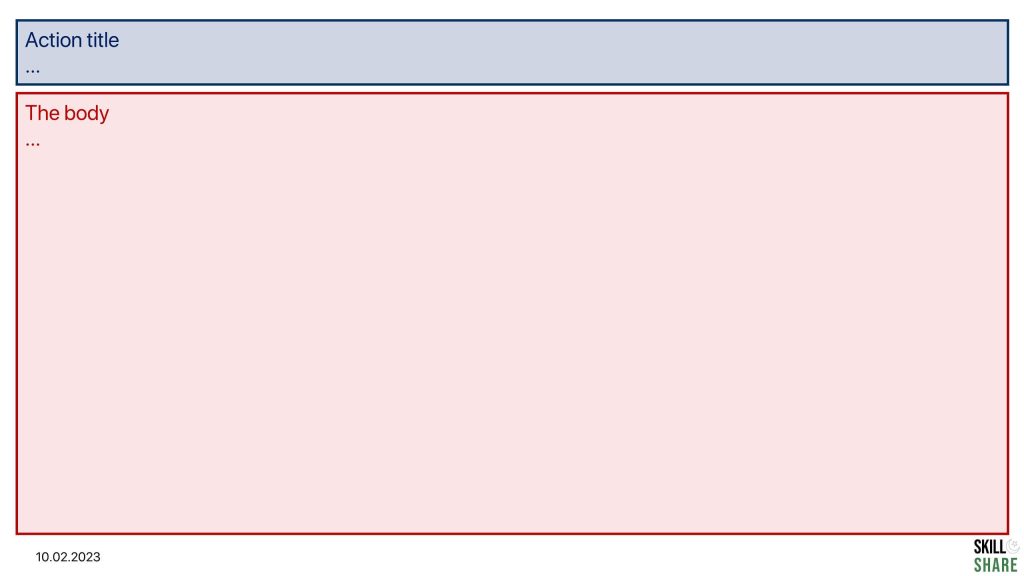
The fundamental principle of slide writing
Let us reiterate what we just said above: The fundamental principle for any slide that you write is this: one slide, one message, with an action title, backed by data in the form of a chart or a graph.
Fundamentally, there are two components to every good presentation slide:
The action title: the header, or the text at the top of the slide (marked in blue)
The body: everything else on the slide (marked in red)
Let’s take a sample McKinsey slide to illustrate our point. In this MBB slide example, you can see a clear distinction between the action title and the slide body.
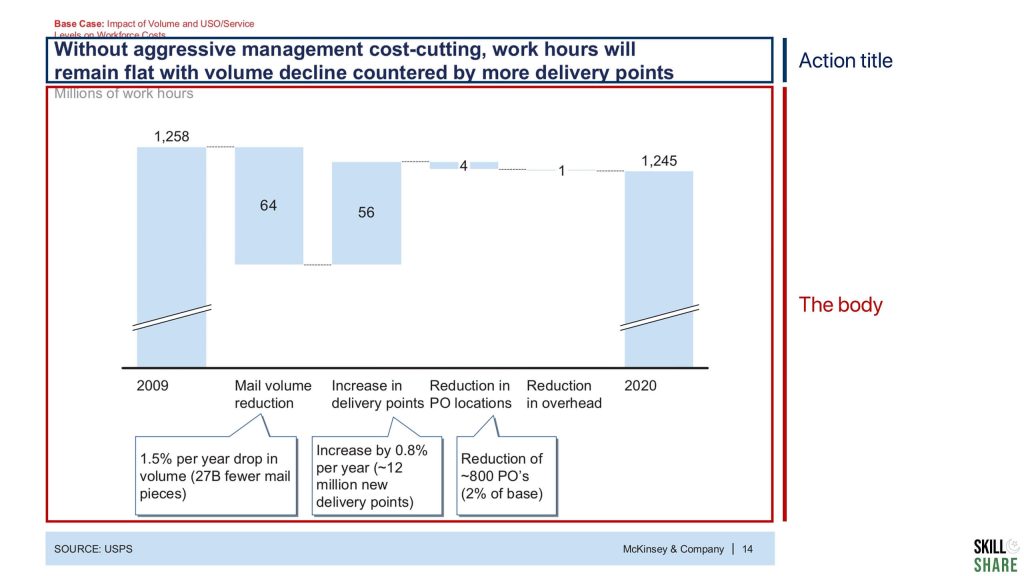
The Action title
The action title of the presentation is the punchline of each slide. It is the summary of everything that is contained within the slide. Action titles are written to summarize the content of the slide in a concise, precise, and quantified sentence. They serve as the punchline or the key message of the content and insights presented on the slide.
An effective presentation slide deck follows a storyline. A presentation storyline is the narrative structure that guides the flow and content of a presentation. A storyline creates coherence in the presentation and makes it easier to understand and retain the information being presented. The action titles of the presentation must be such that if a reader only reads the action titles of each slide, he or she should understand the key message of the entire presentation.
One of the most common problems with most people’s “header” is that they simply label the chart or the slide instead of providing an action title. For example, for a chart that displays sales data, people would simply label the header as “Total Sales” when, in fact, they could provide an action title and elaborate on the key message or the “so what.”
Sure, he’s not wrong, and that’s what the slide shows. However, this action title would require the reader to figure out the implication or “so what” of the slide himself..
Let’s illustrate this using an example. A naive way to write the slide header for a slide that shows the breakup of costs between “Utilities” and “Operations and Maintenance” is to use “Operations and Maintenance” as the header.
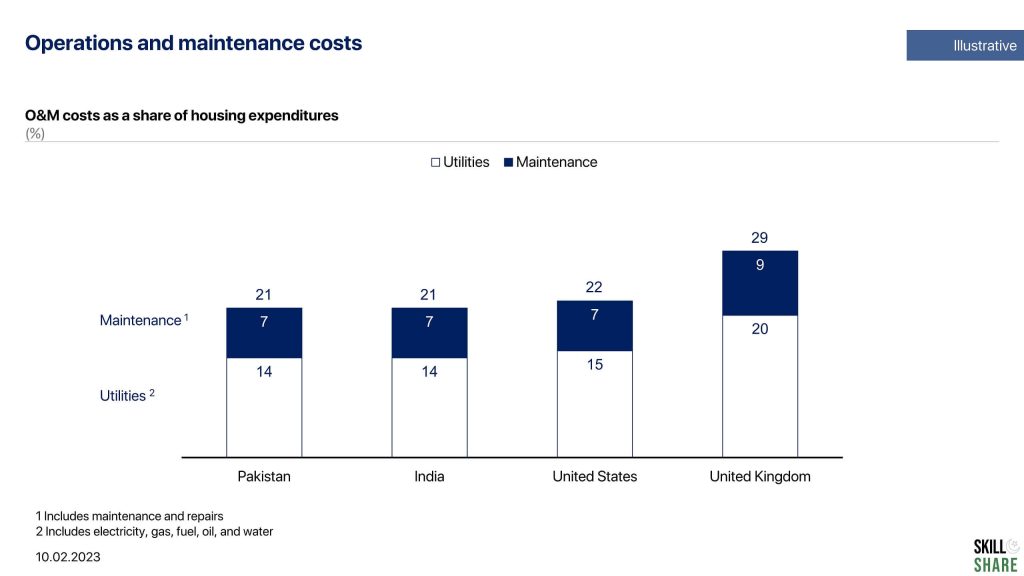
In contrast, a better way to write the action title is to summarize the key message in this slide. In this case, the right action title for this slide would be, “Operations and maintenance account for almost 50 percent of the annual housing expenditure.”
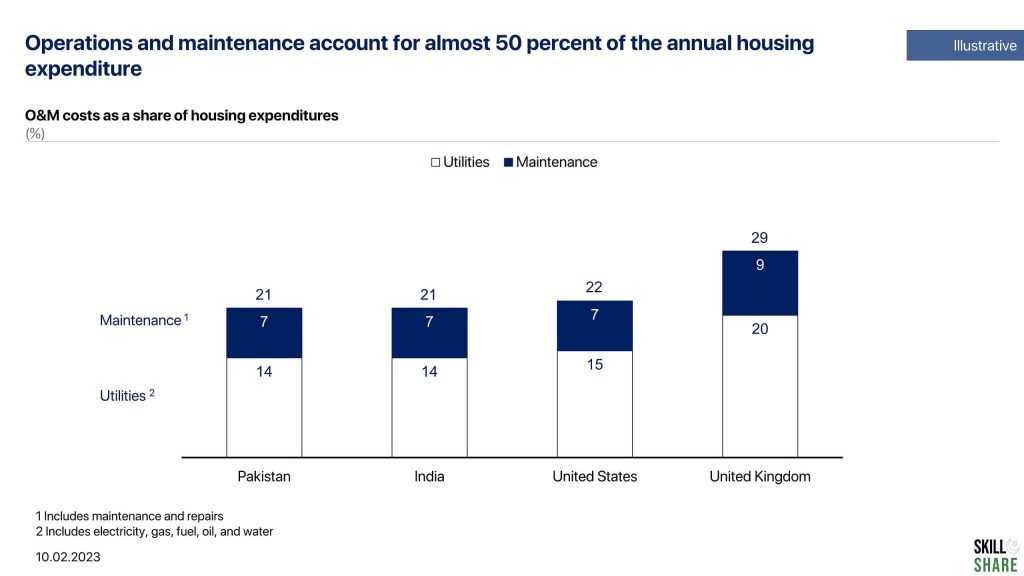
The body
The very short version: less is more.
The body of the slide contains text, charts and graphs, and any other infographics that you may want to show in your slide deck. However, when you are writing your slide, be careful about the text to ink ratio. Try to present your analysis without bombarding the audience with excessive information.
In the body of the slide, you want to show the minimum amount of data to support the assessment in the action title. One way to optimize the text on slide is to synthesize the data and turn it into a chart. This will make it easier for the audience to understand precisely what the data is saying. However, while doing so, you should always be careful about selecting the right chart type and then the chart’s formatting so that you can convey your ideas effectively.
One thing to remain mindful of is that the action title and the body of the slide should complement and support each other. A single slide should have a single message: lead-in by the action title and backed up by the slide body. Essentially, the action title is based on the data that is presented in the body of the text, and therefore, the slide body should fully support the action title.
Here is an example of a McKinsey slide which shows how the action title should be supported by the data presented in the body through charts. In this McKinsey slide example, they want to highlight the significant losses that the industry will experience. To do this, they build up the cumulative losses by showing revenue and costs, the forecast for profit or loss and finally, the cumulative losses.
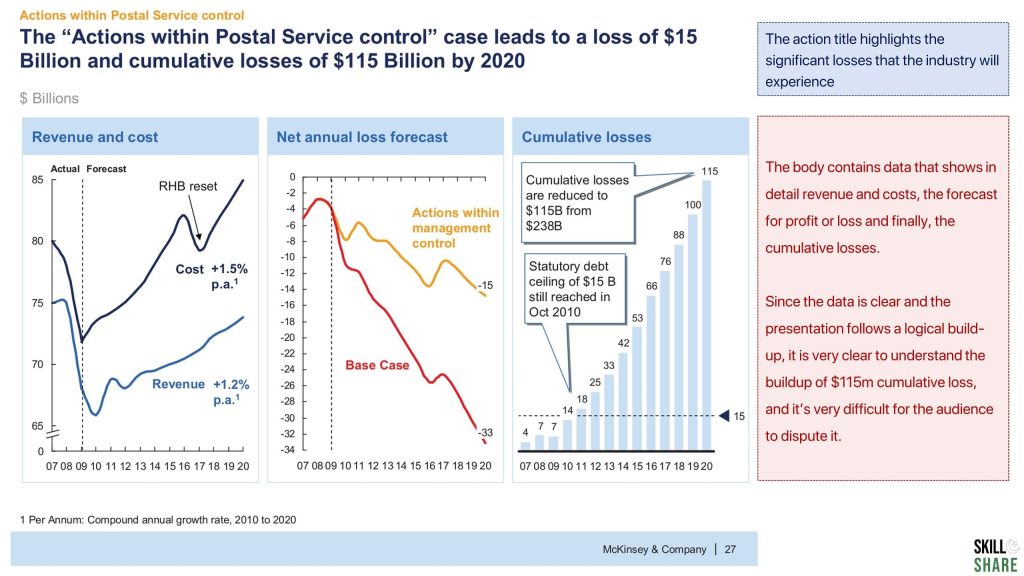
Since the data is clear and the presentation follows a logical build-up, it is very clear to understand the buildup of $115m cumulative loss, and it’s very difficult for the audience to dispute it.

